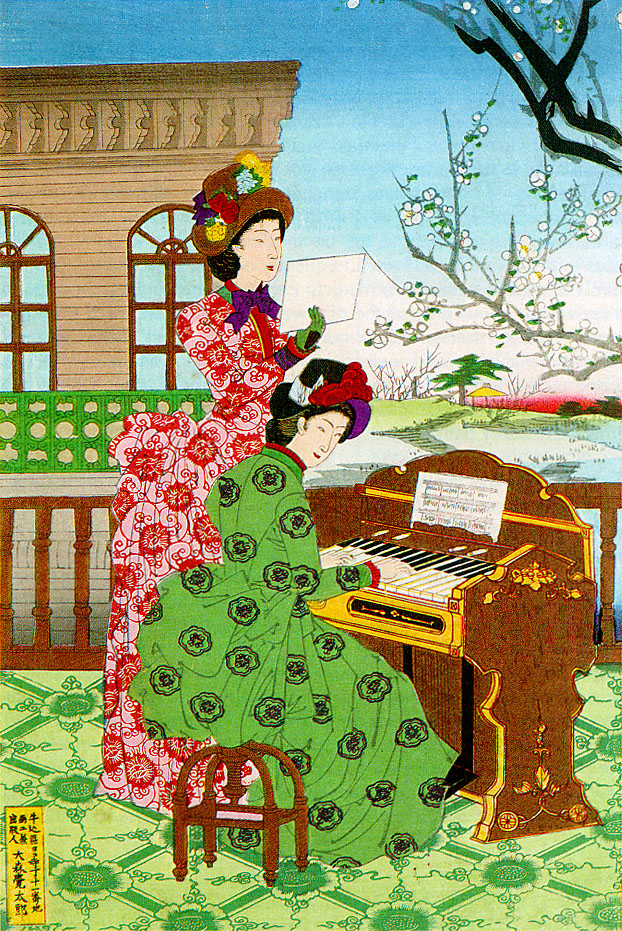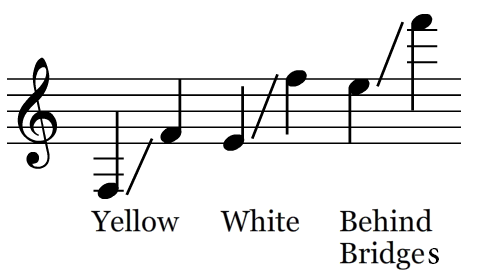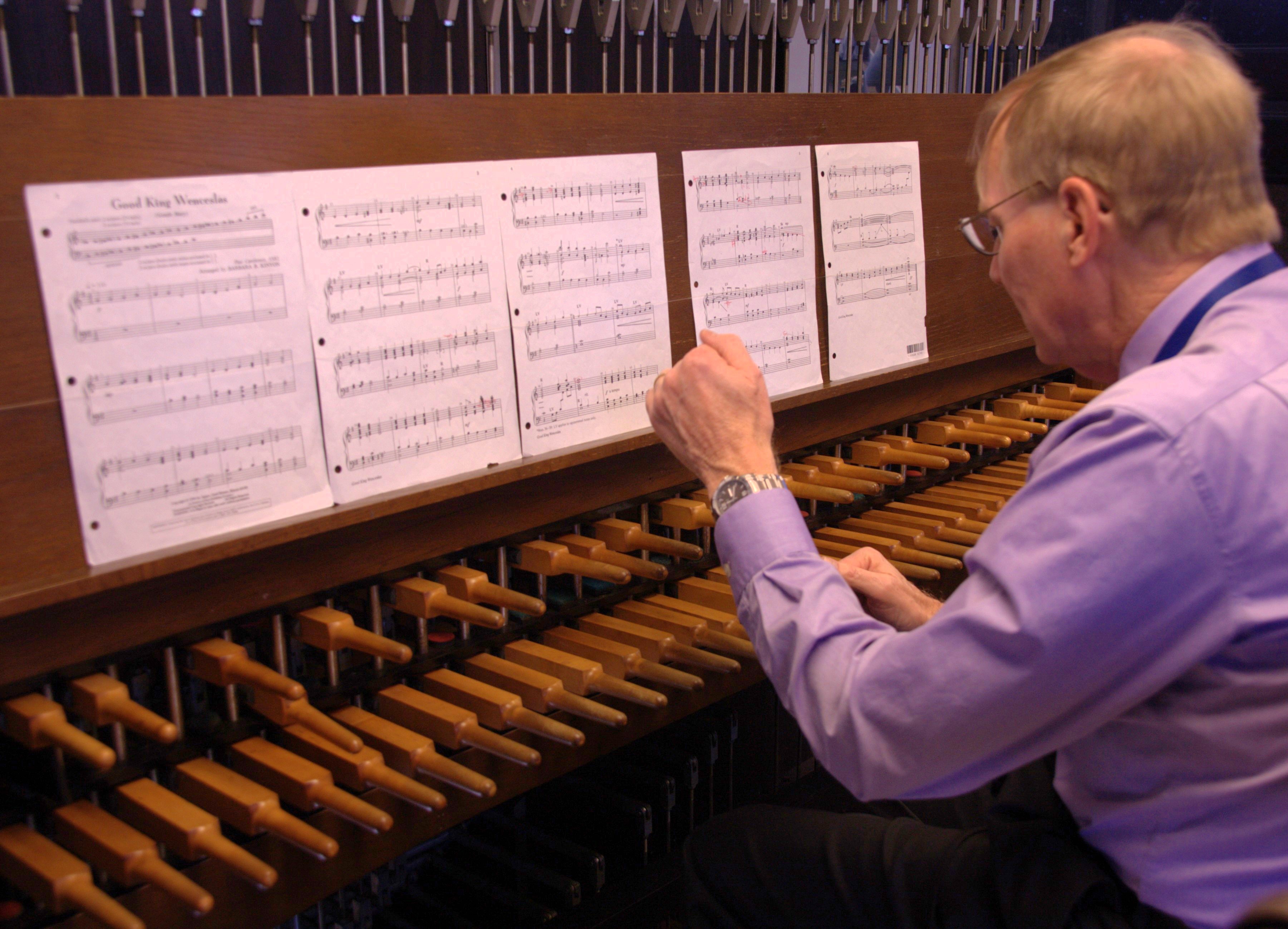|
General MIDI Level 2
General MIDI Level 2 or GM2 is a specification for synthesizers which defines several requirements beyond the more abstract MIDI standard and is based on General MIDI, GS extensions, and XG extensions. It was adopted in 1999 by the MIDI Manufacturers Association (MMA). General requirements * Number of Notes: 32 simultaneous notes * MIDI Channels: 16 * Simultaneous Melodic Instruments – up to 16 (all Channels) * Simultaneous Percussion Kits – up to 2 (Channel 10/11) Parameters Program and bank change events General MIDI 2 compatible synthesizers access all of the 256 instruments by setting cc#0 (Bank Select MSB) to 121 and using cc#32 (Bank Select LSB) to select the variation bank before a Program Change. Variation bank 0 contains the full GM — that is, General MIDI 1 — sound set. Variations using other bank numbers are new to General MIDI 2, and correspond to variation sounds introduced in Roland GS and Yamaha XG. Melodic sounds = Piano = = Chromatic Percussion = = ... [...More Info...] [...Related Items...] OR: [Wikipedia] [Google] [Baidu] |
Synthesizer
A synthesizer (also synthesiser or synth) is an electronic musical instrument that generates audio signals. Synthesizers typically create sounds by generating waveforms through methods including subtractive synthesis, additive synthesis and frequency modulation synthesis. These sounds may be altered by components such as filters, which cut or boost frequencies; envelopes, which control articulation, or how notes begin and end; and low-frequency oscillators, which modulate parameters such as pitch, volume, or filter characteristics affecting timbre. Synthesizers are typically played with keyboards or controlled by sequencers, software or other instruments, and may be synchronized to other equipment via MIDI. Synthesizer-like instruments emerged in the United States in the mid-20th century with instruments such as the RCA Mark II, which was controlled with punch cards and used hundreds of vacuum tubes. The Moog synthesizer, developed by Robert Moog and first so ... [...More Info...] [...Related Items...] OR: [Wikipedia] [Google] [Baidu] |
Marimba
The marimba ( ) is a musical instrument in the percussion family that consists of wooden bars that are struck by mallets. Below each bar is a resonator pipe that amplifies particular harmonics of its sound. Compared to the xylophone, the marimba has a lower range. Typically, the bars of a marimba are arranged chromatically, like the keys of a piano. The marimba is a type of idiophone. Today, the marimba is used as a solo instrument, or in ensembles like orchestras, marching bands (typically as a part of the front ensemble), percussion ensembles, brass band, brass and concert bands, and other traditional ensembles. Etymology and terminology The term ''marimba'' refers to both the traditional version of this instrument and its modern form. Its first documented use in the English language dates back to 1704. The term is of Bantu languages, Bantu origin, deriving from the prefix meaning 'many' and meaning 'xylophone'. The term is akin to kongo languages, Kikongo and Swahili ... [...More Info...] [...Related Items...] OR: [Wikipedia] [Google] [Baidu] |
Harmonica
The harmonica, also known as a French harp or mouth organ, is a free reed wind instrument used worldwide in many musical genres, notably in blues, American folk music, classical music, jazz, country, and rock. The many types of harmonica include diatonic, chromatic, tremolo, octave, orchestral, and bass versions. A harmonica is played by using the lips and tongue to direct air into or out of one (or more) holes along a mouthpiece (which covers one edge of the harmonica for most of its length). Behind each hole is a chamber containing at least one reed. The most common type of harmonica is a diatonic Richter-tuned instrument with ten air passages and twenty reeds, often called a blues harp. A harmonica reed is a flat, elongated spring typically made of brass, stainless steel, or bronze, which is secured at one end over a slot that serves as an airway. When the free end is made to vibrate by the player's air, the reed alternately blocks and unblocks the airway to produce soun ... [...More Info...] [...Related Items...] OR: [Wikipedia] [Google] [Baidu] |
Diatonic Button Accordion
A melodeon or diatonic button accordion is a member of the free-reed aerophone family of musical instruments. It is a type of button accordion on which the melody-side keyboard contains one or more rows of buttons, with each row producing the notes of a single diatonic scale (music), scale. The buttons on the bass (music), bass-side keyboard are most commonly arranged in pairs, with one button of a pair sounding the fundamental of a chord (music), chord and the other the corresponding major triad (music), triad (or, sometimes, a minor triad). Diatonic button accordions are popular in many countries, and used mainly for playing popular music and traditional folk music, and modern offshoots of these genres. Nomenclature Various terms for the diatonic button accordion are used in different parts of the English-speaking world. * In Britain and Australia, the term ''melodeon'' ( or ) is commonly used, regardless of whether the instrument has one, two, or three rows of melody butto ... [...More Info...] [...Related Items...] OR: [Wikipedia] [Google] [Baidu] |
Piano Accordion
A piano accordion is an accordion equipped with a right-hand keyboard similar to a piano or organ. Its acoustic mechanism is more that of an organ than a piano, as they are both aerophones, but the term "piano accordion"—coined by Guido Deiro in 1910—has remained the popular name. It may be equipped with any of the available systems for the left-hand manual. In comparison with a piano keyboard, the keys are more rounded, smaller, and lighter to the touch. These go vertically down the side, pointing inward, toward the bellows, making them accessible to only one hand while handling the accordion.Felt or rubber is placed under the piano keys to control touch and key noise: it is also used on the ''pallets'' to silence notes not sounded by preventing air flow. This material eventually wears with use, resulting in a clacking noise, so has to be replaced to quieten the mechanism. The bass piano accordion is a variation of a piano accordion without bass buttons, with the piano ke ... [...More Info...] [...Related Items...] OR: [Wikipedia] [Google] [Baidu] |
Reed Organ
The pump organ or reed organ is a type of organ that uses free reeds to generate sound, with air passing over vibrating thin metal strips mounted in a frame. Types include the pressure-based harmonium, the suction reed organ (which employs a vacuum system), and the Indian harmonium. Historical examples include the ''Kunstharmonium'' and the American reed organ, while earlier forms include the physharmonica and the seraphine. More portable than pipe organs, free-reed organs became widespread in smaller churches and private homes during the 19th century, although their volume and tonal range were limited. They generally featured one, or occasionally two, manuals, while pedal-boards were rare. Higher-end pump organs offered a broader range of tones, and models intended for churches or affluent households were often housed in finely crafted cabinets. Between the 1850s and the 1920s, several million reed organs and melodeons were manufactured in the United States and Canada ... [...More Info...] [...Related Items...] OR: [Wikipedia] [Google] [Baidu] |
Organ (music)
Carol Williams performing at the West_Point_Cadet_Chapel.html" ;"title="United States Military Academy West Point Cadet Chapel">United States Military Academy West Point Cadet Chapel. In music, the organ is a keyboard instrument of one or more Pipe organ, pipe divisions or other means (generally woodwind or electronic musical instrument, electric) for producing tones. The organs have usually two or three, sometimes up to five or more, manuals for playing with the hands and a pedalboard for playing with the feet. With the use of registers, several groups of pipes can be connected to one manual. The organ has been used in various musical settings, particularly in classical music. Music written specifically for the organ is common from the Renaissance to the present day. Pipe organs, the most traditional type, operate by forcing air through pipes of varying sizes and materials, each producing a different pitch and tone. These instruments are commonly found in churches and co ... [...More Info...] [...Related Items...] OR: [Wikipedia] [Google] [Baidu] |
Hammond Organ
The Hammond organ is an electric organ invented by Laurens Hammond and John M. Hanert, first manufactured in 1935. Multiple models have been produced, most of which use sliding #Drawbars, drawbars to vary sounds. Until 1975, sound was created from rotating a metal tonewheel near an electromagnetic pickup, and Power amplifier, amplifying the electric signal into a speaker enclosure, speaker cabinet. The organ is commonly used with the Leslie speaker. Around two million Hammond organs have been manufactured. The organ was originally marketed by the Hammond Organ Company to Church (building), churches as a lower-cost alternative to the wind-driven pipe organ, or instead of a piano. It quickly became popular with professional jazz musicians in organ trios—small groups centered on the Hammond organ. Jazz club owners found that organ trios were cheaper than hiring a big band. Jimmy Smith (musician), Jimmy Smith's use of the Hammond B-3, with its additional harmonic percussion featu ... [...More Info...] [...Related Items...] OR: [Wikipedia] [Google] [Baidu] |
Santur
The santur ( ; ) is a hammered dulcimer of Iranian origin.--- Rashid, Subhi Anwar (1989). ''Al-ʼĀlāt al-musīqīyya al-muṣāhiba lil-Maqām al-ʻIrāqī''. Baghdad: Matbaʻat al-ʻUmmāl al-Markazīyya. History The santur was invented and developed in the area of Iran. "The earliest sign of it comes from Assyrian and Babylonian stone carvings (669 B.C.); it shows the instrument being played while hanging from the player's neck" (35). This instrument was traded and traveled to different parts of the Middle East. Musicians modified the original design over the centuries, yielding a wide array of musical scales and tunings. The original santur was likely made with wood and stone and strung with goat intestines. According to Habib Hasan Touma, the Babylonian santur was the ancestor of the harp, the yangqin, the harpsichord, the qanun, the cimbalom, and the hammered dulcimers. Name The name 'santur' may come from Persian ''sanṭīr'', a borrowing of the Greek ψαλ� ... [...More Info...] [...Related Items...] OR: [Wikipedia] [Google] [Baidu] |
Dulcimer
The term dulcimer refers to two families of musical string instruments. Hammered dulcimers The word ''dulcimer'' originally referred to a trapezoidal zither similar to a psaltery whose many strings are struck by handheld "hammers". Variants of this instrument are found in many cultures, including: * Hammered dulcimer (England, Scotland, United States) * Hackbrett (southern Germany, Austria, Switzerland) * Tsymbaly (Ukraine), tsimbl (Ashkenazi Jewish), țambal (Romania) and cimbalom (Hungary) may refer to either a relatively small folk instrument or a larger classical instrument. The santouri (Greece) (called "santur" in the Ottoman Empire) is almost identical to the Jewish and Romanian folk instruments. * Santur (Iran and Iraq) * Santoor (northern India and Pakistan) is constructed and tuned differently from the santur of Iran and Iraq * Khim (Cambodia, Laos, Thailand) * Yangqin (China), Đàn tam thập lục (Vietnam), yanggeum (Korea) Appalachian dulcimer and deriv ... [...More Info...] [...Related Items...] OR: [Wikipedia] [Google] [Baidu] |
Carillon
A carillon ( , ) is a pitched percussion instrument that is played with a musical keyboard, keyboard and consists of at least 23 bells. The bells are Bellfounding, cast in Bell metal, bronze, hung in fixed suspension, and Musical tuning, tuned in Chromatic scale, chromatic order so that they can be sounded harmoniously together. They are struck with clappers connected to a keyboard of wooden batons played with the hands and Pedal keyboard, pedals played with the feet. Often housed in bell towers, carillons are usually owned by churches, universities, or municipalities. They can include an automatic system through which the time is announced and simple tunes are played throughout the day. Carillons come in many designs, weights, sizes, and sounds. They are among the world's heaviest instruments, and the heaviest carillon weighs over . Most weigh between . To be considered a carillon, a minimum of 23 bells are needed; otherwise, it is called a chime (bell instrument), chime. S ... [...More Info...] [...Related Items...] OR: [Wikipedia] [Google] [Baidu] |




